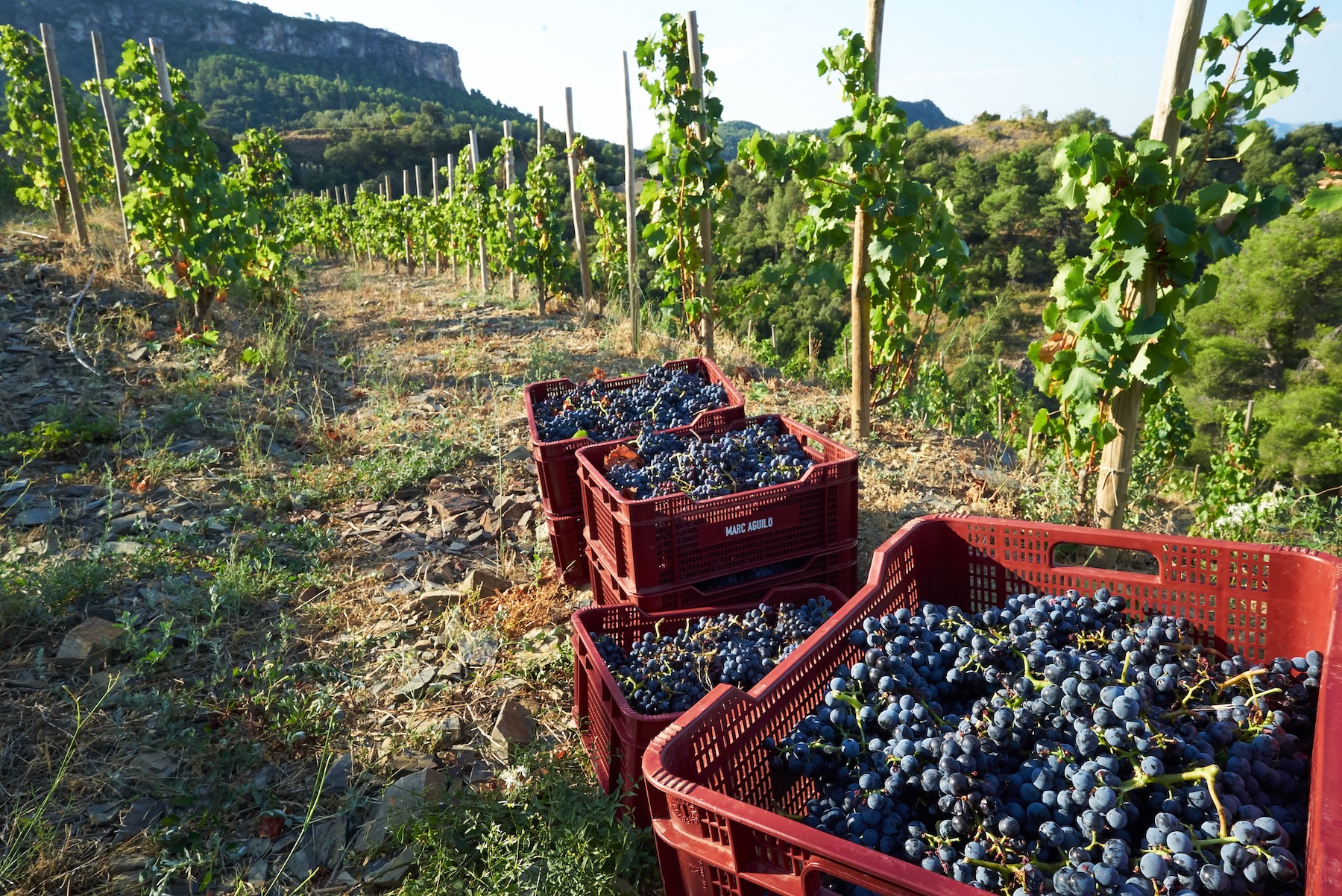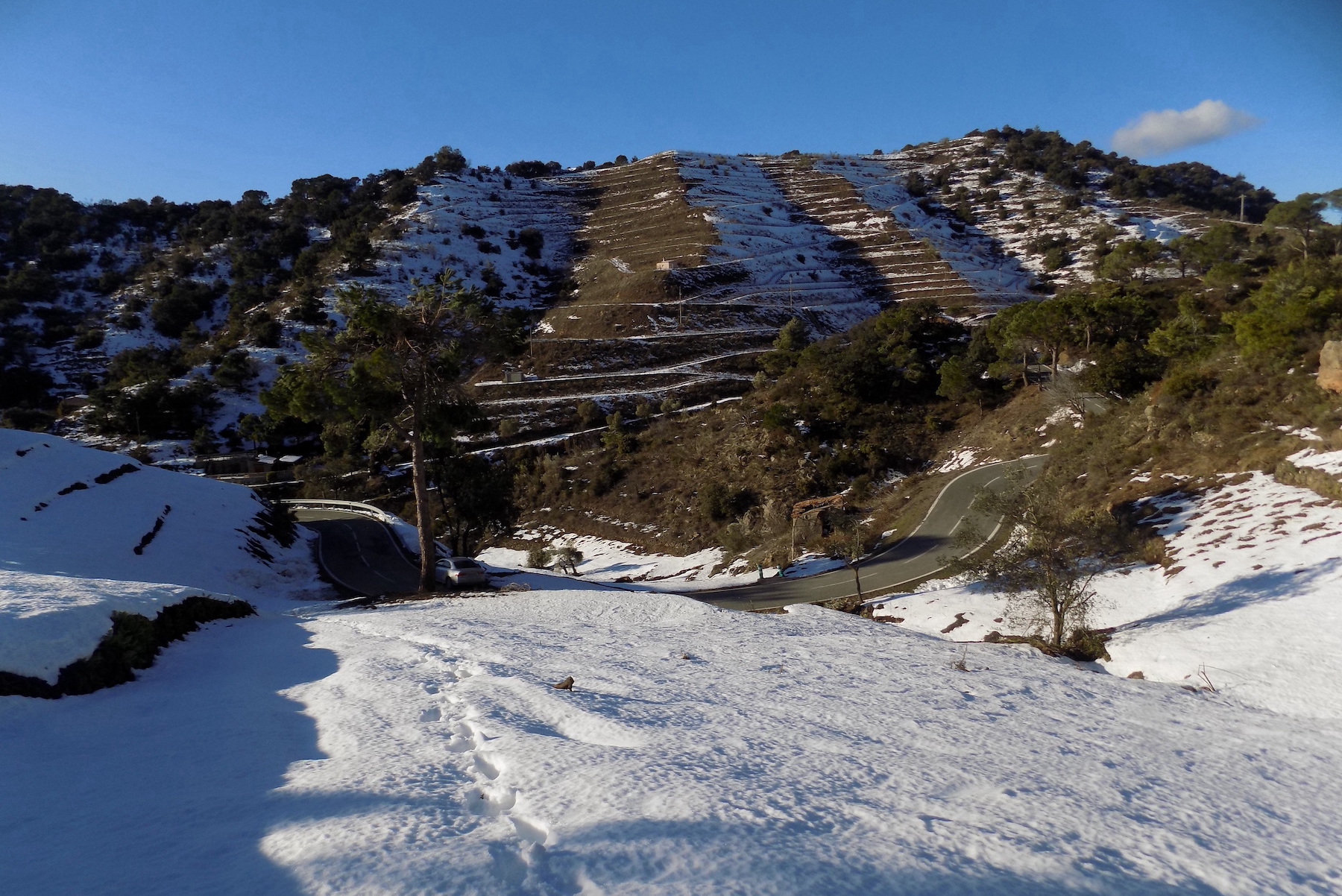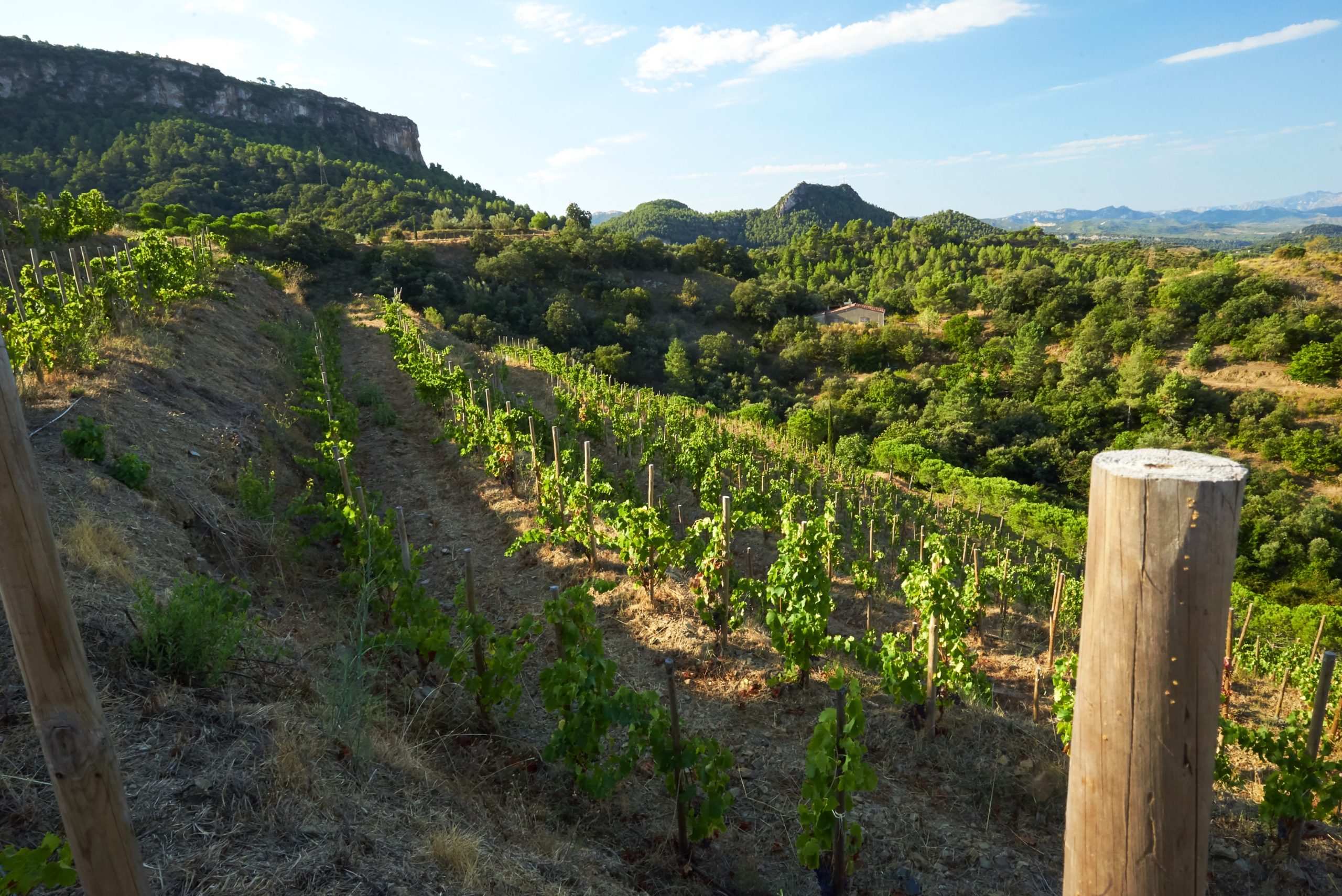
The grape varieties for Aretheal are grenache and carignan, the quintessence of Priorat DOQ wines, even more so when planted on slate-predominant hillsides.

The inhabitants of the Priorat know the area between Falset and Porrera, with predominantly slate soils, as Colls de Porrera, within the Priorat DOQ.
It is a land of steep, rugged slopes, full of twists and corners, which makes it difficult for two properties to be alike. In the case of Aretheal there are three rather airy slate slopes found at between 530 and 580 metres, sheltered by the Morral, the highest mountain around. However, as the parcels have different aspects (south and north), the grapes produced are notable for their nuances.
Vines of three plots that cling with all their might to the steep slopes with sharply contrasting temperatures between day and night, that we cultivate in the traditional way, following organic farming guidelines, observing the lunar cycle to perform certain tasks on the land, and largely with the help of animals.
El Bosc (facing north) is an earthier plot, with stony, sandy soils.
The vines are planted traditionally pruned in goblet, accompanied by a wooden stake.

El Bosc (facing north) is an earthier plot, with stony, sandy soils. The vines are planted traditionally pruned in goblet, accompanied by a wooden stake.
At La Roca (north facing), white grenache and red grenache grow in loamy, sandy soil.
The vines are planted in traditional pruned goblet, accompanied by a wooden stake.

At La Roca (north facing), white grenache and red grenache grow in loamy, sandy soil. The vines are planted in traditional pruned goblet, accompanied by a wooden stake.
Loamy and sandy soils, as well as slate, are predominant in La Mina (south-west outlook), where the presence of organic matter is scarce.
The vines are planted traditionally pruned in goblet, accompanied by a wooden stake.

Loamy and sandy soils, as well as slate, are predominant in La Mina (south-west outlook), where the presence of organic matter is scarce. The vines are planted traditionally pruned in goblet, accompanied by a wooden stake.
El Bosc (facing north) is an earthier plot, with stony, sandy soils.
The vines are planted traditionally pruned in goblet, accompanied by a wooden stake.

El Bosc (facing north) is an earthier plot, with stony, sandy soils. The vines are planted traditionally pruned in goblet, accompanied by a wooden stake.
At La Roca (north facing), white grenache and red grenache grow in loamy, sandy soil.
The vines are planted in traditional pruned goblet, accompanied by a wooden stake.

At La Roca (north facing), white grenache and red grenache grow in loamy, sandy soil. The vines are planted in traditional pruned goblet, accompanied by a wooden stake.
Loamy and sandy soils, as well as slate, are predominant in La Mina (south-west outlook), where the presence of organic matter is scarce.
The vines are planted traditionally pruned in goblet, accompanied by a wooden stake.

Loamy and sandy soils, as well as slate, are predominant in La Mina (south-west outlook), where the presence of organic matter is scarce. The vines are planted traditionally pruned in goblet, accompanied by a wooden stake.